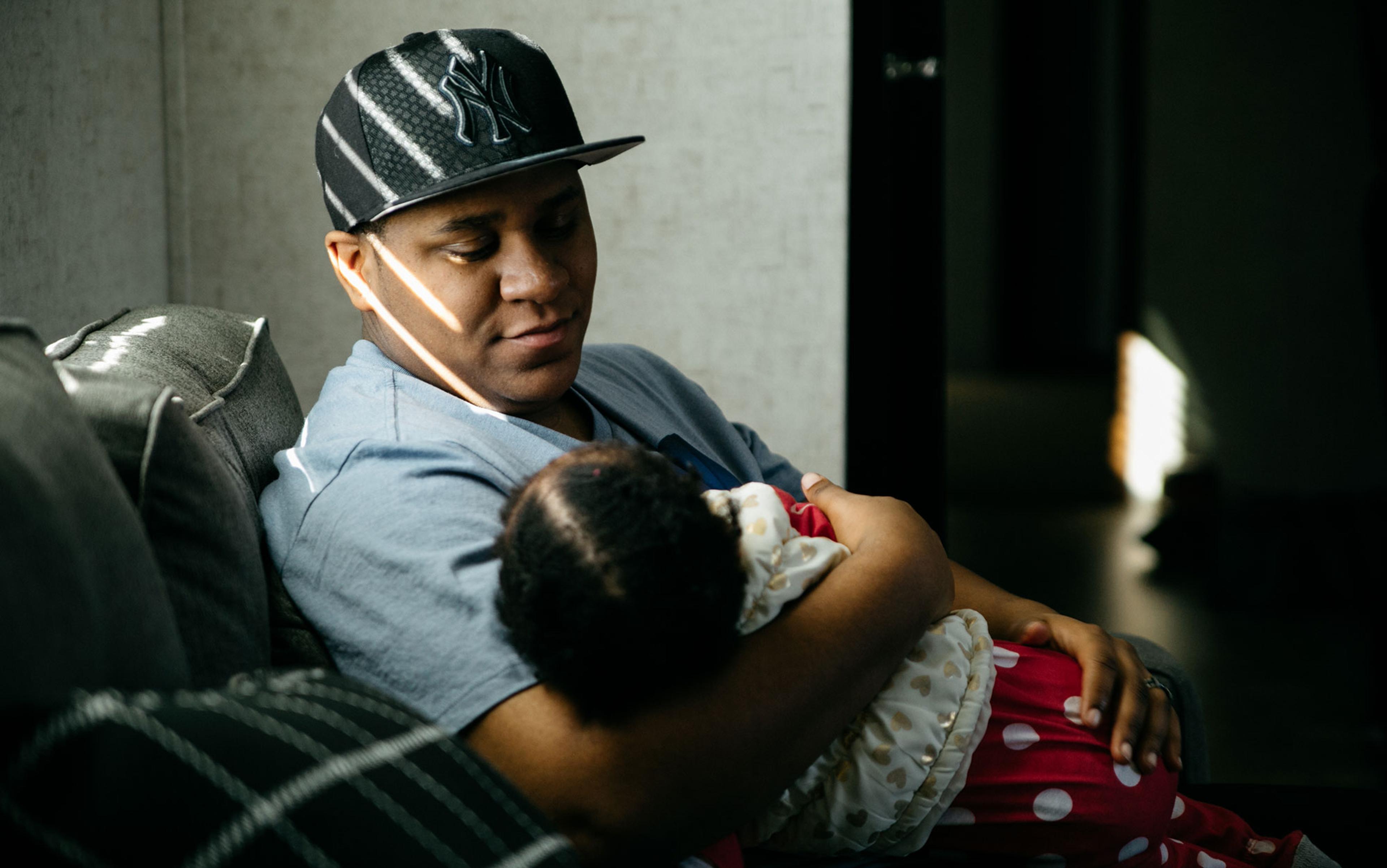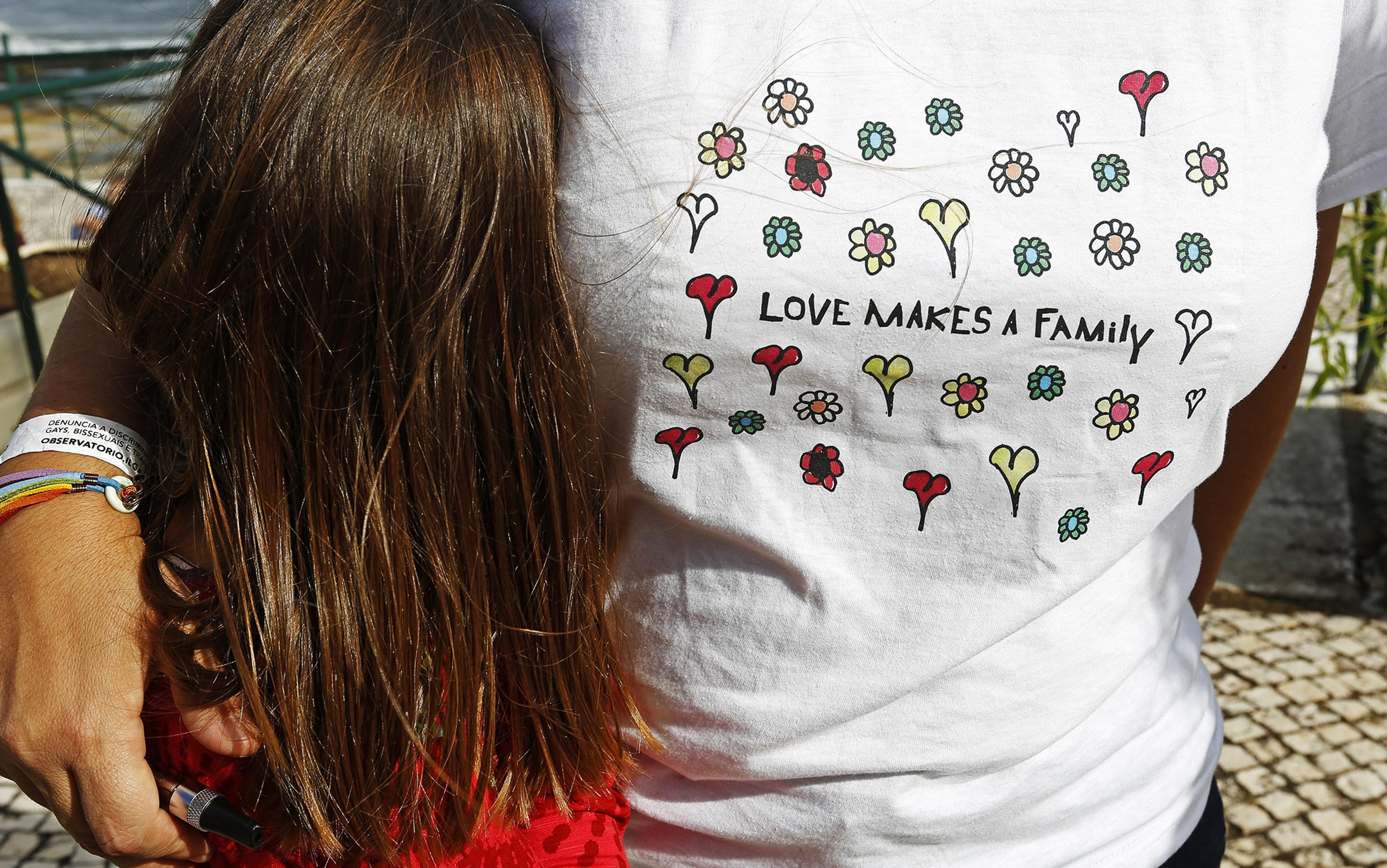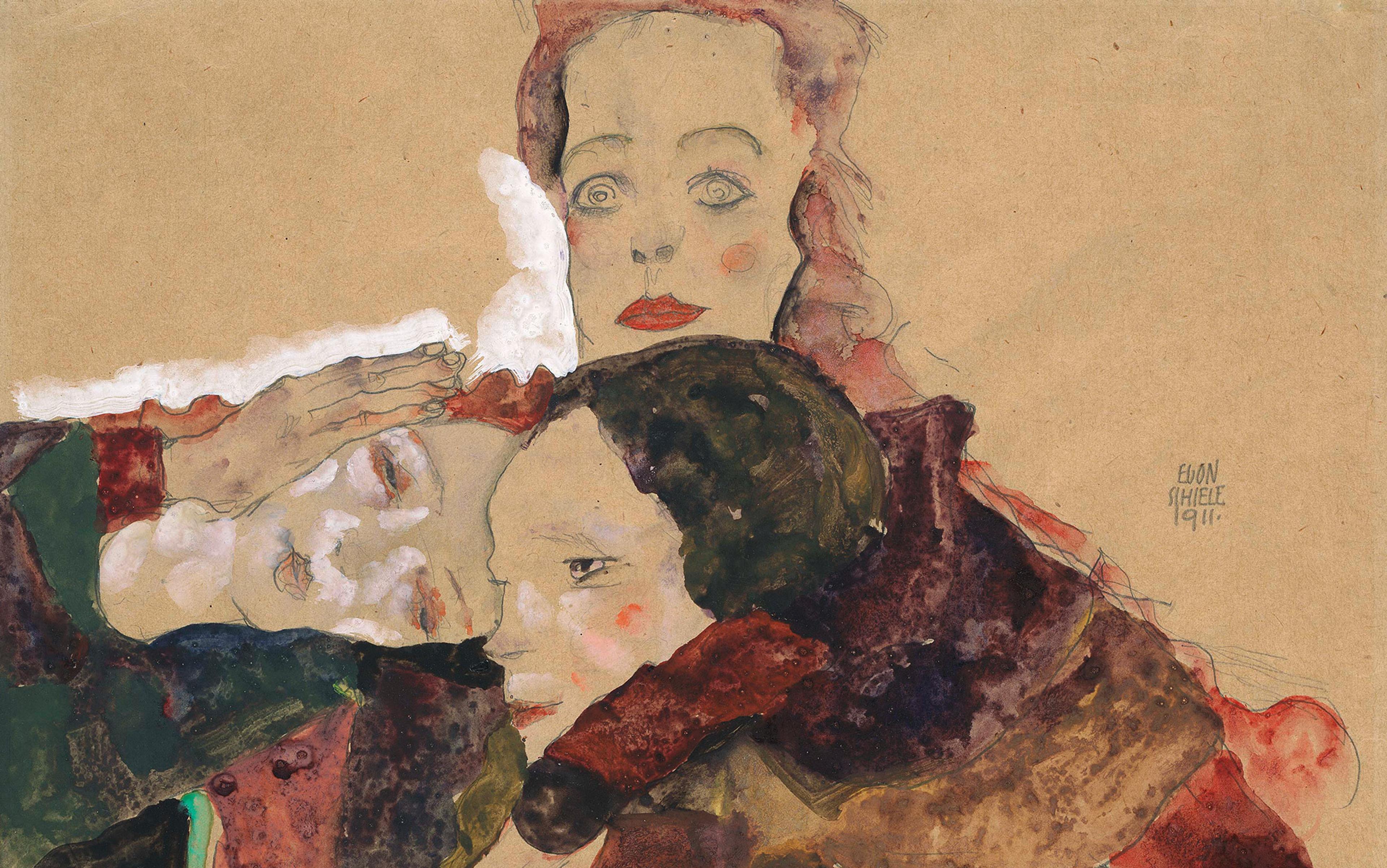Trans people have built a rich and nuanced language for discussing our bodies. A trans man – that is, a man who got the ‘it’s a girl’ treatment as a newborn – might, as a new father, find that he prefers to say he is ‘chestfeeding’ rather than ‘breastfeeding’ his baby. A recent safer sex guide for trans people adopts ‘strapless’ and ‘front hole’ as substitutes for ‘penis’ and ‘vagina’ in its discussion of trans bodies. And a few years ago, the Midwives Alliance of North America revised its Core Competencies manual to make the language more gender-inclusive, on occasion referring to ‘birthing parents’ instead of ‘mothers’.
What are such innovations for? As trans people, we often find that established ways of talking about bodies are simply not built for us – that they belong to a view of the world in which we’re not merely despised, but unimaginable.
We can give examples from our personal experience. Suppose you are advised to screen yourself for breast cancer, but you have a body that, in colloquial terms, has no breasts. It might seem more natural to speak of checking your ‘chest’, rather than your ‘breasts’ – especially if your breasts were a source of extreme enough unease for you to have them removed.
Or suppose you have never been a woman – either by your own lights or in the eyes of the law – but you have grown some new breasts, and now need to find a bra that fits. A shopping expedition seems daunting. Will the staff baulk when someone with stereotypically male facial features tries on bras, and pays for them with a credit card printed with a stereotypically male name? Will they give respectful fitting assistance, and access to a dressing room? A shop that offers ‘bras to fit anyone’ and speaks neutrally of ‘customers’ will probably appear more welcoming than one that promises ‘bras to fit any woman’ and genders its clientele in all its promotional materials.
Individual needs vary, but certain general principles flow from these cases. A common theme when it comes to genital language – one that doesn’t resonate with either of us personally, but speaks to people we know and love – is that traditional terms have taken on essentialising baggage. Users of ‘strapless’, for example, are typically trans women or other trans people who were designated male at birth and told that they have a ‘penis’, while users of ‘front hole’ are typically trans men or other trans people who were designated female at birth, and told that they have a ‘vagina’. The choice of words is deeply personal.
Some commentators complain, on ostensibly feminist grounds, that these novel or nonstandard coinages threaten cis women’s freedom to talk about their bodies. In an article in The Independent in 2016, the journalist Samantha Rea wrote:
Already, women are finding themselves censored and corrected when recounting their own experiences. Breastfeeding becomes ‘chest feeding’, vaginas become ‘front holes’, and there are no pregnant women, but, ‘pregnant people’.
This criticism is misguided. That’s not because ‘chestfeeding’, ‘front hole’ and ‘person’ are objectively better words than ‘breastfeeding’, ‘vagina’ and ‘woman’ (they aren’t). Rather, it’s because these allegedly feminist objections begin with the wrong characterisation of what we’re up to when we use trans-inclusive language.
The supposed conflict between trans inclusion and feminism rests on a simplistic understanding that ignores individual difference. Our critics presume that we must pick out one proper term for every physiological reality that we wish to discuss, and that advancing one term is equivalent to censoring another. They often accuse us of ‘erasing’ cis women’s identities and experiences. But that’s simply not the case. What we need is not a single, objectively correct set of words, but an awareness of individual variation among the people that such words describe, and a willingness to adjust to changing contexts and circumstances. Ironically, in their eagerness to choose a universal, all-purpose vocabulary, critics of trans inclusivity are the ones who engage in the erasure of difference, in at least four different ways.
First, critics of trans activism seem to presuppose that there’s a single, standard ‘female’ experience, associated with all, and only, cis women. In 2015, the journalist Elinor Burkett wrote in The New York Times:
one of the difficult parts of witnessing and wanting to rally behind the movement for transgender rights is […] their disregard for the fact that being a woman means having accrued certain experiences, endured certain indignities and relished certain courtesies in a culture that reacted to you as one.
While most (perhaps all) women suffer in virtue of being women, Burkett’s objections assume that there’s a distinct way in which all cis women suffer, and no trans women do. But as feminists have been pointing out for decades, there is no universal female experience – even if we restrict our attention to cis women.
Burkett took particular issue with a student theatre group at Mount Holyoke College, a liberal arts college for women in Massachusetts. In 2015, they decided to replace their annual production of The Vagina Monologues with an exploratory series called The Student Body, on the grounds that the renowned feminist play risked making gender a matter of simplistic anatomical or biological distinctions. ‘Let me get this right,’ Burkett fumes. ‘The word “vagina” is exclusionary and offers an extremely narrow perspective on womanhood, so the 3.5 billion of us who have vaginas, along with the trans people who want them, should describe ours with the politically correct terminology trans activists are pushing on us: “front hole” or “internal genitalia”?’
But Burkett’s summary is misleading. Yes, one student theatre group chose not to produce The Vagina Monologues because they felt it implied that vaginas are essential for womanhood – but there was no universal demand for vagina erasure, and no objection to the word ‘vagina’ or the topic of vaginas. The objection was about conflating vaginas with womanhood, in a way that (according to some Mount Holyoke students) excludes many trans women, and erases many trans men. This criticism might or might not be justified; as the US trans writer and activist Julia Serano observes in a blog post, trans feminists vary in their assessment of the play, just as cis feminists do. But one group’s decision to produce a different play hardly constitutes silencing of cis women or erasure of their bodies. (Another student group at Mount Holyoke produced The Vagina Monologues in the same year.)
This brings us to a second frequent error in criticisms of trans-inclusive terminology. When trans people point out that cis experience is not universal, we’re generally not proposing to silence cis women by replacing a single cis narrative with a monolithic, trans-centred one. Rather, trans vocabulary and stories can exist alongside cis vocabulary and stories.
If it’s yours, you ought to be able to call it a ‘vagina’, ‘front hole’, ‘tomcat’ or anything else you want
Take some mistaken objections to the safer-sex guide for trans people produced by a community health centre in Washington, DC, which uses ‘front hole’ as a more neutral synonym for ‘vagina’. The US blogger Ophelia Benson complains that this general use of the term amounts to misogyny. But the guide is not demanding that any cis woman call her vagina a ‘front hole’. The glossary where the term is introduced begins by disavowing such prescriptions: ‘There’s no one right way to refer to our bodies, but to keep things consistent in this guide, we’ve decided to use the following words in the following ways.’ It’s a stretch to read any prescriptions about cis women’s vaginas into a document titled Guide to Safer Sex for Trans Bodies, where cis bodies are off-topic.
To understand what’s going on here, we ought to distinguish between specific and general uses of terms. First, say you’re referring to a specific, individual vagina. If it’s your vagina, then whether you’re cis or trans, you damn well ought to be able to call it a ‘vagina’, a ‘punani’, a ‘cunt’, a ‘front hole’, a ‘broni’, a ‘tomcat’, or basically anything else you want. If it’s someone else’s, you should probably defer to their preferences.
Different norms apply, however, when speaking about vaginas (or birth, or lactation) in general, as a kind of anatomical feature or phenomenon. What term should you use to cover everybody with a particular anatomy, when everybody has a different preferred way of talking about theirs? These issues arise outside trans politics, too. If you’re providing instruction or guidance for expecting parents, what do you call people supporting a partner who is giving birth? Many people in helper roles are invested in thinking of themselves as ‘fathers’ – but what if you want to welcome lesbian couples, or single pregnant people who brought along a close friend or sibling?
When speaking about the role, rather than a specific person, it makes sense to use a neutral term such as ‘birth partner’, which picks out the feature that the people you’re addressing have in common. Sure, this might not be anybody’s first choice for talking about themselves – but at least it doesn’t insult, invalidate, or exclude. It would be misguided for an expecting father to protest that this usage erases biology and obscures his role as a father; after all, it doesn’t prevent anyone from referring to him specifically as such.
Similarly, the use of ‘birthing parent’ doesn’t stop any expectant mother from talking about herself and her experience in terms of motherhood. And none of the trans-inclusive language we’ve considered is an attempt to erase cis women. ‘Front hole’ was promoted in a safer-sex guide for trans people; ‘chestfeeding’ was created specifically for trans men; and the general term ‘pregnant person’ doesn’t prevent us from speaking of particular pregnant women, any more than the gender-neutral word ‘patient’ stops doctors from calling a specific patient a ‘woman’.
The nub of the analysis is this: trans-inclusive language has no bearing on how any given cis woman can speak about her own body. All kinds of ‘someone is wrong on the internet’ cases can occur, of course, and if you’ve been personally told not to call your own vagina a vagina, that’s something we’d reject. But most of the examples cited don’t support the fear that trans activists are making a concerted effort to erase cis womanhood.
It’s too early to say whether ‘front hole’ and ‘chestfeeding’ will weather the test of time. Choosing a good general term isn’t easy, and the occasional embarrassing or hurtful mistake is inevitable. Yet commentators often write as if more is at stake – as if trans people’s concerns can be taken seriously only at the expense of cis women’s needs. This brings us to our third mistake: equating womanhood with the characteristics that are used to single out women for sexist treatment.
The US blogger Olivia Broustra commits this error when she objects to trans-inclusive language on the grounds that: ‘Female language around female issues is important to many cis women because we have struggled to even have our identities and issues seen as valid.’
Cis women’s identities are valid. Every cis woman is entitled to call herself a woman, call her vagina a vagina, call her breasts breasts, and, if she has children, call herself a mother. But in opposing all uses of gender-neutral language, Broustra and other critics aren’t just demanding that cis women’s needs and experiences be seen as valid; they are demanding that they be seen as universal. Furthermore, they imply that such an understanding is necessary in the fight against misogyny.
It’s important to be clear about the role of attitudes toward women in the politics of stereotypically female physiology. Many attacks on reproductive freedom are profoundly misogynistic, and we must continue to name this misogyny if we wish to defeat it. But this need is sometimes mistakenly invoked to argue against ‘pregnant person’ language in discussions of abortion. For example, the philosopher Kathleen Stock at the University of Sussex remarked on Twitter: ‘Abortion, as a medical process, only happens to females, and to avoid reference to this in legislation is to miss out a point of massive political importance to females, as an oppressed group.’
The traits, activities or needs of a group that are a source of its oppression need not be defining
However, recognising that the attacks on abortion rights are motivated by an animus against women does not require that we identify womanhood itself with the ability to get pregnant. Yet that is what we do when we speak as if all people who need abortions are necessarily women. (Stock has made it clear that she doesn’t believe that all women can get pregnant, and that she distinguishes between ‘woman’ as a social category and ‘female’ as a biological one. However, that is not relevant to the point at issue, which is whether Irish law recognises that some people who can get pregnant – such as trans men – are not women.)
As an analogy, consider how stereotypically feminine work is often devalued in terms of recognition and material compensation. This is a misogynistic phenomenon that disproportionately harms women. But it doesn’t follow that such work is an essential part of womanhood; to think otherwise, in fact, would be profoundly regressive. The traits, activities or needs of a group that are a source of its oppression need not be defining, but can simply be associated with that group.
Likewise, political attacks on access to abortion are of a piece with the devaluation and subordination of women. But recognising this fact no more requires us to equate womanhood with stereotypically female physiology than recognising that sexism in the labour market demands that we equate womanhood with stereotypically feminine work.
In the case that Stock is discussing, the question of ‘woman’ vs ‘pregnant person’ isn’t just symbolic. Activists have recently called for ‘pregnant person’ language in the laws that will enshrine legalised abortion in the Republic of Ireland, following the referendum of 2018. As the legal scholars Máiréad Enright, Fiona de Londras, Ruth Fletcher and Vicky Conway have noted, the narrower ‘pregnant woman’ language creates needless uncertainty regarding the abortion rights of trans men (who can receive legal recognition as male under Irish law, and some of whom can and do get pregnant). As long as there’s the possibility of a pregnant trans person not being a woman in the eyes of the law, to speak about abortion exclusively in terms of women, in all contexts and without exception, is to ignore the need for laws that protect the abortion rights of all pregnant people.
It would be deeply mistaken for someone to invoke trans inclusion in order to object to the naming and condemnation of misogyny, or to insist that we systematically eliminate all mention of women from discussions of pregnancy and abortion. But insisting that we eliminate all gender-neutral language for pregnant people is equally misguided, and plausibly more dangerous in a world where gendered language is already the default.
Many critics of trans inclusivity are eager to pin responsibility for terms such as ‘chestfeeding’ and ‘front hole’ on trans women. Rea frames her Independent article as a response to the UK author and trans woman Juno Dawson; Burkett addresses her New York Times op-ed to trans women; Broustra’s blog post is titled ‘I’m a Woman. You are a Trans Woman. And That Distinction Matters’. Nobody seems to pay attention to trans men or nonbinary trans people. This is an instance of a fourth and final type of error: assuming that trans people are all alike.
Inclusive language around birth, lactation and vaginas is not designed primarily for trans women, who do not give birth, rarely lactate, and often don’t have vaginas. Rather, it’s designed for trans men and other transmasculine people, who might give birth, lactate and have vaginas, but who are not women. These groups have some things in common – both are ill-served by a discourse that conflates womanhood with vaginas – but trans people are a diverse group, brought together by contingent cultural history and the necessities of political coalition. We are not identical copies with identical needs.
So if it’s wrong to aim for a single set of words to be used for every person, in every context, what’s the alternative? We don’t have a definitive answer, but here are some suggestions. First, it’s vital to keep talking about vaginas, uteruses and so on, and about the rather shabby treatment they get in many societies. Luckily, we can do this without reducing anyone to their body parts, or any identity to its stereotyped physiology.
Second, it’s crucial to attend to context, and to adjust one’s language depending on the setting, audience and purpose. To be sure, this requires thought, effort and flexibility – but inclusivity is worth it. Just as the (rare) trans-sympathetic activist who tells a cis mother not to use ‘breastfeeding’ is out of line, so is the ostensible feminist telling a trans man not to talk about ‘chestfeeding’. Far from being burdensome, such flexibility is routine in ordinary conversations. Just think about the different terms that cis women use to refer to their body parts, capturing different registers, moods, philosophical outlooks and cultural associations. In a medical context, we might want to distinguish a vagina from a vulva, while colloquially ‘vagina’ covers the whole assembly. Some seek to reclaim ‘cunt’; others can hear it only as a misogynistic slur. At Bryn Mawr College, a women’s liberal arts college in Pennsylvania, the perfect yonic reply to the traditional May Pole is the May Hole. None of these usages are always right, but none of them are always wrong. Most of us can shift between them without much difficulty.
As we collectively sort out language for these topics, people will overgeneralise and oversimplify from time to time, and misunderstand and misapply good principles. But such individual excesses and missteps aren’t limited to trans politics. If they were damning of the movements they represent, we’d have to abandon the whole feminist project (among many other movements for social change).
As you might have guessed by now, we’re not going to leave you with a list of approved terms. But we hope to have equipped you with tools to engage critically with alarmist reports about the ‘trans language police’. If you believe, like us, that people of all genders – including nonbinary people, trans men, trans women and cis women – should have the right to name their own bodies and experiences, hopefully we’ve convinced you that this alleged tension between the rights of trans people and cis women is illusory, or at the very least exaggerated.






